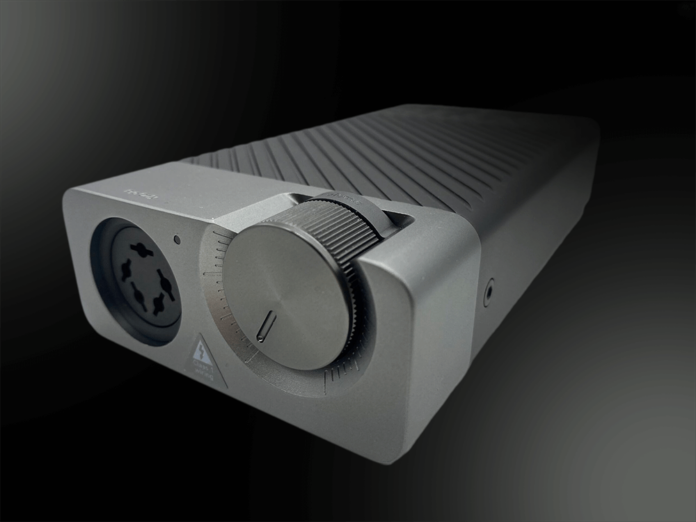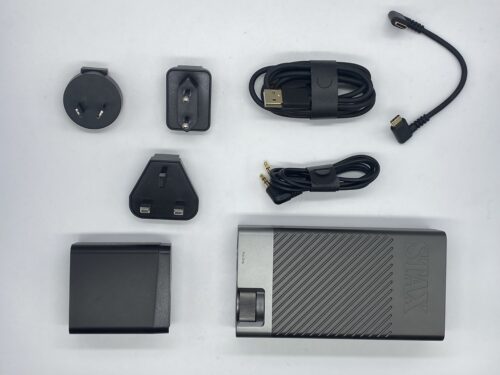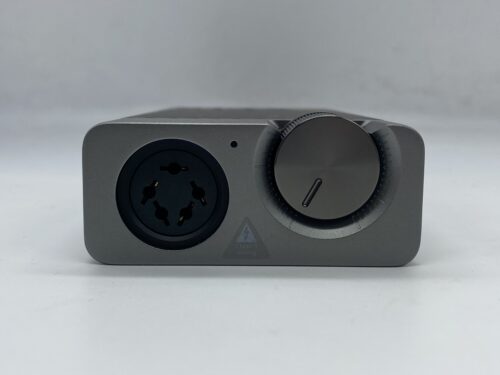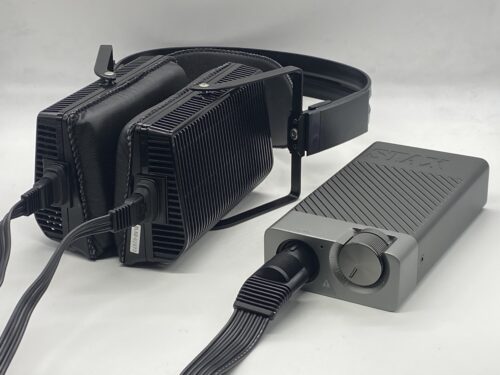STAX has made some portable amps in the past, including the original D10. They’ve decided to revisit this product line with the new D10 II, costing $945. Even though they are known for their premium electrostatic headphones and proprietary amps, the D10 can fulfill a certain niche for those who aren’t committed to having a desktop setup. This is probably the simplest and most inexpensive way to listen to STAX headphones, but does it do the sound justice?
What You Get
- D10 II amplifier
- USB-C to USB-C cable
- Mini USB-C to USB-C cable
- USB-C to USB-A cable
- 3.5mm to 3.5mm cable
- Power block
- International power adapters
- Manual
Build
This is probably the most portable device you can listen to a STAX headphone on. Thanks to its surprising size and simplicity, the D10 II makes sense on most surfaces, as well as just carrying in your hand. There’s weight to it, but it’s light for its size, especially considering the materials used here. Its aluminum alloy shell feels extremely solid and sturdy, with smooth rounded edges and a classy design. The volume dial juts out a bit, and it turns easily. Being that this is a STAX amplifier, the D10 II only provides their proprietary 5-pin headphone output. On the back of the device, you have two slots for USB Type C, one for DC in, and one for data. There’s also a 3.5mm line input and a switch on the back that you need to use to specify which input you’re using.
Design
The SRM-D10 II is a DAC and an amp that supports an AKM 4493 decoding chip with high-quality audio capacitors. It supports DSD 256, and PCM with sampling rates up to 384kHz/32bit.
Sound Impressions
My time testing out the D10 II was with the STAX L500MK2. These were the only STAX headphones readily available to me. Keeping that in mind, the D10 II did a fantastic job driving these headphones. I kept the volume dial parked at twelve o’clock most of the time, slightly adjusting to comfortable gains depending on the track. The scale that the D10 II can present is extraordinary. The clarity and naturalness of the L500MK2 are preserved through the amp, but I felt a larger scope here.
Sometimes I think the L500MK2 can sound very delicate but with the D10 II, the sound is a bit grander. Its soundstage is slightly wider, but the imaging takes a whole new form, with more separation and exact positioning throughout the mix. The headspace takes on a completely holographic form, sounding naturally spatial. There wasn’t a single instance of the L500MK2 not completely engulfing your head in a bubble, with different instruments articulating tons of depth.
Vocals sit slightly more above your head, leaving you in the middle of this layered sonic environment. Individual notes have a more expressive foundation, adding to the weight and density that the D10 II is able to bring out. The bass has slightly more bloom to it but still feels balanced and realistic. The same can be said about the mids and highs as well, with sound elements sounding completely unveiled and pristine in timbre. I think the D10 II extends the highs into brighter, but supremely crispy and sparkly territory.
Summary
The D10 II has made me more of a STAX guy than I ever was before. I’ve always admired the sound of STAX headphones, but the D10 II manipulated it in a way that expressed so many finer textures and details. It kept the natural and realistic sound of STAX headphones and opened up its scope while adding more impact to notes. Listening to the D10 II with the L500MK2 was an extremely memorable experience and more than worth the money.

The STAX SRM-D10 is available for pre-order at Audio46.
MAJORHIFI may receive commissions from retail offers.












